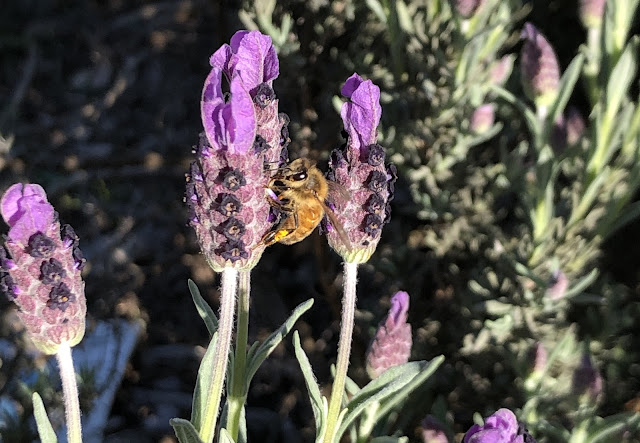
May 7 celebration salutes bees and other pollinators

|
|
Hard-working honey bees and their product are celebrated this Saturday at the
California Honey Festival in Woodland. (Photo: Kathy Morrison)
|
This event is guaranteed to be a sweet time: The California Honey Festival.
Woodland’s Main Street will be buzzing Saturday, May 7, during this celebration of honey bees and other pollinators and their wonderful creation. Discover the many flavors of honey (not all honeys are sweet!) as well as its multitude of uses. Also, learn how you can help bees and other beneficial insects in your own landscape.
There will be bee-friendly activities for the whole family, say organizers. “We strive to create an event experience that inspires people of all ages to protect and celebrate bees and other pollinators.”
Scores of vendors will offer honey-laced items as well as other products that depend on bees (such as almonds). There will be plenty of food as well as live entertainment. Another plus: Most of the honey is California-sourced.
Dedicated to honey appreciation and pollinator education, the California Honey Festival is a partner with the Honey and Pollination Center at the Robert Mondavi Institute, UC Davis. Woodland is recognized as a Bee City USA by the Xerxes Society for its support of pollinators.
Bees pollinate an estimated 80% of all flowers. More than 100 California crops depend on bees for pollination.
Festival hours are 10 a.m. to 5 p.m. Saturday. Admission is free. The festival will fill the historic Main Street area in downtown Woodland with parking available. No pets, please.
For details, list of vendors and directions: https://californiahoneyfestival.com/ .
Comments
0 comments have been posted.Sacramento Digs Gardening to your inbox.
Food in My Back Yard Series
May 6: Maintain soil moisture with mulch for garden success
April 29: What's (already) wrong with my tomato plants?
April 22: Should you stock up on fertilizer? (Yes!)
April 15: Grow culinary herbs in containers
April 8: When to plant summer vegetables
April 1: Don't be fooled by these garden myths
March 25: Fertilizer tips: How to 'feed' your vegetables for healthy growth
March 18: Time to give vegetable seedlings some more space
March 11: Ways to win the fight against weeds
March 4: Potatoes from the garden
Feb. 25: Plant a fruit tree now -- for later
Feb. 18: How to squeeze more food into less space
Feb. 11: When to plant? Consider staggering your transplants
Feb. 4: Starting in seed starting
Sites We Like
Garden Checklist for week of May 11
Make the most of the lower temperatures early in the week. We’ll be back in the 80s by Thursday.
* Plant, plant, plant! It’s prime planting season in the Sacramento area. Time to set out those tomato transplants along with peppers and eggplants. Pinch off any flowers on new transplants to make them concentrate on establishing roots instead of setting premature fruit.
* Direct-seed melons, cucumbers, summer squash, corn, radishes, pumpkins and annual herbs such as basil.
* Harvest cabbage, lettuce, peas and green onions.
* In the flower garden, direct-seed sunflowers, cosmos, salvia, zinnias, marigolds, celosia and asters. (You also can transplant seedlings for many of the same flowers.)
* Plant dahlia tubers.
* Transplant petunias, marigolds and perennial flowers such as astilbe, columbine, coneflowers, coreopsis, dahlias, rudbeckia and verbena.
* Keep an eye out for slugs, snails, earwigs and aphids that want to dine on tender new growth.
* Feed summer bloomers with a balanced fertilizer.
* For continued bloom, cut off spent flowers on roses as well as other flowering plants.
* Add mulch to the garden to maintain moisture. Mulch also cuts down on weeds. But don’t let it mound around the stems or trunks of trees or shrubs. Leave about a 6-inch-to-1-foot circle to avoid crown rot or other problems.
* Remember to weed! Pull those nasties before they set seed.
* Water early in the day and keep seedlings evenly moist.